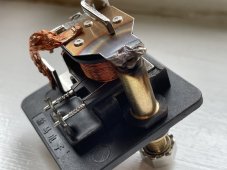Hi all, sorry if this question has already come up - I tried searching for an answer but didn't find it 
I have a 300 litre / 80 gallon thermal store with two immersion heater slots which are currently filled with 2 x 240v AC 3Kw heaters
I'd like to replace one with a 48 volt 1500 watt heater
I can power this from a 48v 440ah Lead Acid battery bank for a couple of hours per day
Can I ask the wise Gurus of this Forum ?? ?
How much I can push that 48v immersion heater given that my battery bank sits with an open circuit voltage of 55v?
As I understand it it will cope with +5% so only 50.4v
Thank you
Lord Dust
I have a 300 litre / 80 gallon thermal store with two immersion heater slots which are currently filled with 2 x 240v AC 3Kw heaters
I'd like to replace one with a 48 volt 1500 watt heater
I can power this from a 48v 440ah Lead Acid battery bank for a couple of hours per day
Can I ask the wise Gurus of this Forum ?? ?
How much I can push that 48v immersion heater given that my battery bank sits with an open circuit voltage of 55v?
As I understand it it will cope with +5% so only 50.4v
Thank you
Lord Dust



